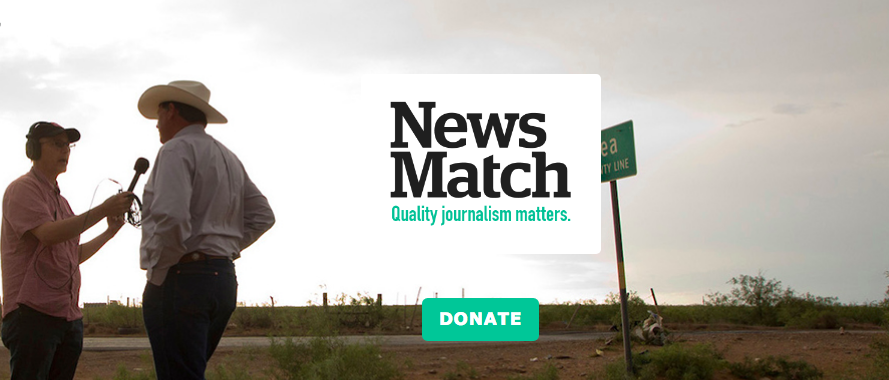Is News Match a Good Fit for Pubcasters?
Donors of all stripes were deluged last week with solicitations to open their checkbooks on #GivingTuesday and #GivingNewsDay.
In the journalism arena, specifically, individuals are still being wooed to trigger a match that will double their giving – if they donate through News Match before December 31. In short, if a person donates up to $1,000 to one of this year’s 155 News Match newsrooms, funders will pony up an equal amount.
For donations made between November 1 and December 31, participating news organizations can receive up to $25,000 each from a $3 million pool of funds assembled by a consortium of foundations seeking to boost support for public service journalism.
Last year’s effort raised $4.8 million for some 109 journalism organizations in what was hailed as the nation’s largest grassroots fundraising campaign.
Since then, the list of participating News Match organizations has grown 40 percent and includes dozens of well-known independent local, regional, investigative and single-topic nonprofit news sites.

But there are only nine public media organizations involved in the 2018 campaign.
PBS NewsHour and Public Radio International are among the largest. WHYY in Philadelphia, WFYI in Indianapolis, WDET in Detroit, Rocky Mountain Public Media in Colorado and St. Louis Public Radio are among the traditional public broadcasters participating. Also included is Crosscut, part of Cascade Public Media in Seattle, and Current, which covers news about public media.
Most of these have a track record of working with other nonprofit news outlets in their regions, said Sue Cross, executive director of the Institute for Nonprofit News (INN), which administers News Match.
So, why aren’t more public broadcasters taking part? For one thing, they must abide by some rules that may make it tough to qualify.
To participate in News Match, you must be an INN member. To be eligible for membership, you must:
- Publish original, high-quality reporting. “We want to support the creation of original reporting. That is the most endangered part of journalism,” INN’s Cross said.
- Abide by a donor transparency policy requiring you to make public all donors who give $5,000 or more a year earmarked for news programming. “It’s a principle, and we think it’s more important than ever,” Cross said.
- Have an editorial independence policy that prohibits donors from influencing news coverage. Most public broadcasters “have fantastic policies around editorial independence,” Cross said.
Not all pubcasters produce original content, which is one hurdle to INN membership. Instead, their news programming lineup skews heavily to syndicated NPR and other national programming with little offered in the way of original investigative or public service journalism.
Another hurdle is donor transparency. One factor complicating donor transparency is the rise of donor-advised funds where donors choose to be anonymous. Moreover, journalism support is increasingly coming from individual philanthropists instead of foundations, and individuals may seek to remain secret to deter unwanted solicitations.
Many public broadcasters do receive anonymous donations, although they may not be earmarked for news, which is OK. Moreover, some public media organizations come under the umbrella of a university that receives anonymous donations. In these cases, INN asks stations to check if they are taking large anonymous gifts dedicated specifically for news programs or news centers.
Moreover, noted Kathy Merritt, CPB’s senior vice president of journalism and radio, public broadcasters are required to protect donor privacy. “We take donor privacy very seriously,” she said.
She also points out that public media organizations already get a match for funds they raise – not from individuals but as part of a formula embedded in the Community Service Grants that CPB issues.
On top of their base Community Service Grant, qualified public radio stations receive five cents for every dollar of non-federal financial support (NFFS) they raise; qualified public television stations receive 12 cents per dollar of NFFS raised..
That may not sound like a lot, but for large stations, it can add up.
So, should public broadcasters strive to be part of News Match?
Some are trying to work through their donor transparency policies to be able to participate, Cross said, noting that “two-thirds of our members collaborate in some way with public media.”
PBS NewsHour, for one, added INN’s editorial independence policy when it signed up to take part in News Match, said Nick Massella, the NewsHour’s senior director of brand strategy and communications. Its donors were already listed in its 990 tax filings.
Individual public stations must decide for themselves. And like everything in the emerging journalism ecosystem, rules are changing. “Independent newsrooms are growing,” Cross noted, “and public media has become less insular.”
You can subscribe to CPB Ombudsman Reports at https://www.cpb.org/subscribe


